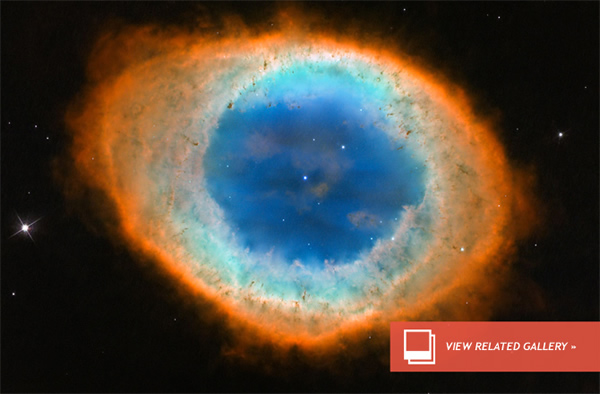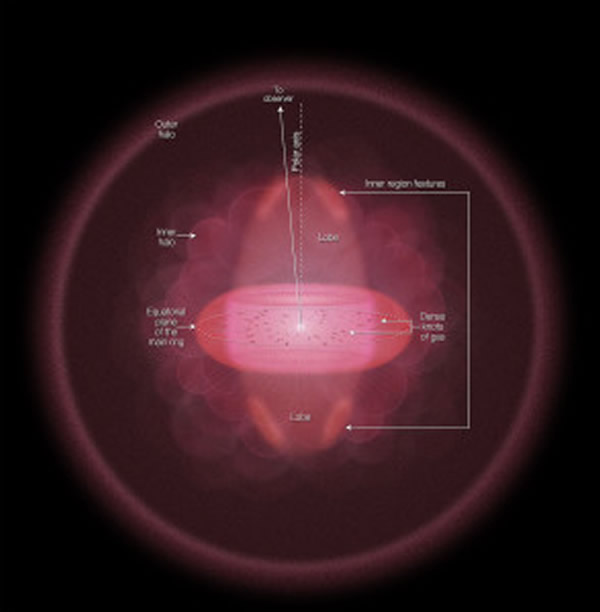Hubble's Best Ever View of a Giant Cosmic... Doughnut?
New Hubble image of the Ring Nebula (Messier 57). Credit: NASA, ESA, and C. Robert O’Dell (Vanderbilt University).
One of the more well-known objects within our galaxy, the Ring Nebula has been observed by astronomers since the late 1700s. It is a definitive planetary nebula, visible from Earth as a bright and multi-colored ring of material violently expelled from a sun-like star reaching the end of its life. Looking like a gigantic cosmic eye, the Ring Nebula has been imaged countless times — but new observations with the Hubble Space Telescope have finally revealed its true shape.
It’s a big doughnut.
Cosmic perspectives can be tricky. It’s often difficult to tell exactly how far away objects are in space, and sometimes the closer things are, the less precise the measurements get — mostly due to a lack of convenient distance markers.
The Ring Nebula (cataloged as Messier 57) is thought to be a little over 2,000 light-years away within our galaxy, which is relatively close by… again, give or take a few tens of light-years. And even though it might look like a flat ring of material expanding out into space (not unlike the “enhanced” explosion of the Death Star) it actually has much more depth to it — we just happen to be looking at it almost straight down from the top.
The geometry of the Ring Nebula. Click here to view hi-res version. Credit: NASA, ESA, and A. Feild (STScI).
Astronomers investigating the Ring Nebula using Hubble’s Wide Field Camera 3 have obtained the image above, the clearest and most detailed view yet of the structure, which is about a light year across. Further studies with ground-based telescopes show that not only is there material around the edges but also in the center, moving toward and away from us. And it’s all surrounded by an outer halo.
So actually the Ring Nebula is shaped like a football wrapped by a doughnut around its middle… inside a bubble.
“With Hubble’s detail, we see a completely different shape than what’s been thought about historically for this classic nebula,” said team leader C. Robert O’Dell of Vanderbilt University in Nashville. “The new Hubble observations show the nebula in much clearer detail, and we see things are not as simple as we previously thought.”
And even though the Ring Nebula may seem static and serene from our point of view, it’s the result of a very catastrophic event — and it’s still quite dynamic.
As vast shells of rapidly outward-expanding material slam into slower-moving material, they become ionized and glow brightly, creating the nebula as we see it. And all that stuff is still moving very quickly through space — over 43,000 mph (69,200 km/h)!
According to the team, the material in the Ring Nebula will continue to expand for another 10,000 years, becoming fainter and fainter as it fades into interstellar space.
(I don’t know about you, but donuts certainly don’t last that long in my house.)
Read more and see hi-res images of the Ring Nebula on the NASA Hubble site and the ESA press release here.(May 23, 2013 06:55 PM ET // by Jason Major)













